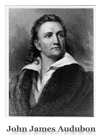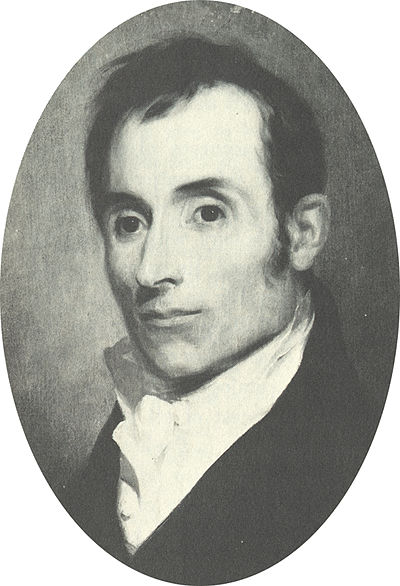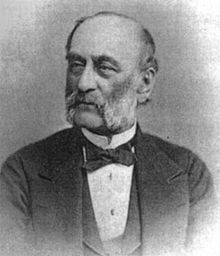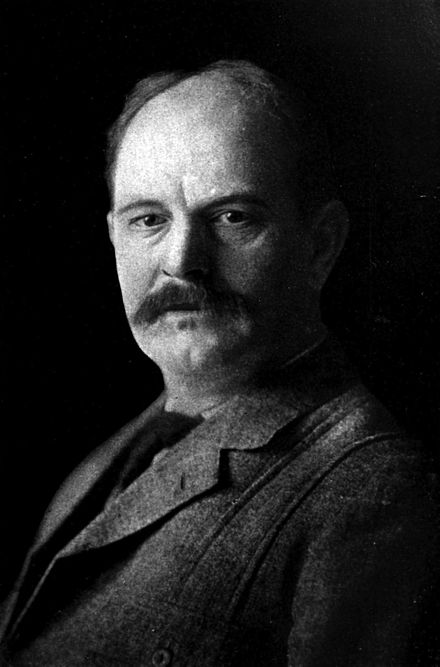 Although John James Audubon had met Alexander Wilson (1766-1813) in 1810 and had seen Wilson’s great work American Ornithology, it was not until ten years later that Audubon arrived at the idea of publishing his own illustrations of birds and began collecting and drawing specifically toward that end. With his assistant Joseph Mason, a young artist specializing in plants and insects, he journeyed from Cincinnati to New Orleans and Natchez. In 1822 Audubon took lessons in oil painting from an itinerant artist named John Stein (or Steen). This is his only recorded training in this medium. He had been working primarily in pastels, but about this time he began increasingly to use watercolors. Audubon visited Philadelphia in 1824 and arranged to show his work at the Academy of Natural Sciences. He won no sponsorship in that city, however, because of his rough manner and the threat his project posed to the work of the favored Alexander Wilson.
Although John James Audubon had met Alexander Wilson (1766-1813) in 1810 and had seen Wilson’s great work American Ornithology, it was not until ten years later that Audubon arrived at the idea of publishing his own illustrations of birds and began collecting and drawing specifically toward that end. With his assistant Joseph Mason, a young artist specializing in plants and insects, he journeyed from Cincinnati to New Orleans and Natchez. In 1822 Audubon took lessons in oil painting from an itinerant artist named John Stein (or Steen). This is his only recorded training in this medium. He had been working primarily in pastels, but about this time he began increasingly to use watercolors. Audubon visited Philadelphia in 1824 and arranged to show his work at the Academy of Natural Sciences. He won no sponsorship in that city, however, because of his rough manner and the threat his project posed to the work of the favored Alexander Wilson.
Although John James Audubon had met Alexander Wilson (1766-1813) in 1810 and had seen Wilson’s great work American Ornithology, it was not until ten years later that Audubon arrived at the idea of publishing his own illustrations of birds and began collecting and drawing specifically toward that end. With his assistant Joseph Mason, a young artist specializing in plants and insects, he journeyed from Cincinnati to New Orleans and Natchez. In 1822 Audubon took lessons in oil painting from an itinerant artist named John Stein (or Steen). This is his only recorded training in this medium. He had been working primarily in pastels, but about this time he began increasingly to use watercolors. Audubon visited Philadelphia in 1824 and arranged to show his work at the Academy of Natural Sciences. He won no sponsorship in that city, however, because of his rough manner and the threat his project posed to the work of the favored Alexander Wilson.
 Alexander Wilson (1766-1813). He was a Scottish-American poet, ornithologist, naturalist, and illustrator. Identified by George Ord as the “Father of American Ornithology”, Wilson is regarded as the greatest American ornithologist prior to Audubon. With a nephew, Wilson left Scotland in May 1794 at the age of 27, and settled in Pennsylvania. Opportunities were scarce for weavers in the Philadelphia area, and Wilson turned to teaching.Wilson taught at the Milestown School in Bristol Township, the present-day East Oak Lane neighborhood of Philadelphia, for five years from 1796 to 1801.He then moved on to teach briefly in New Jersey.Eventually, Wilson settled into a position at Gray’s Ferry, Pennsylvania, and took up residence in nearby Kingsessing. There, he met the famous naturalist William Bartram, who encouraged Wilson’s interest in ornithology and painting.
Alexander Wilson (1766-1813). He was a Scottish-American poet, ornithologist, naturalist, and illustrator. Identified by George Ord as the “Father of American Ornithology”, Wilson is regarded as the greatest American ornithologist prior to Audubon. With a nephew, Wilson left Scotland in May 1794 at the age of 27, and settled in Pennsylvania. Opportunities were scarce for weavers in the Philadelphia area, and Wilson turned to teaching.Wilson taught at the Milestown School in Bristol Township, the present-day East Oak Lane neighborhood of Philadelphia, for five years from 1796 to 1801.He then moved on to teach briefly in New Jersey.Eventually, Wilson settled into a position at Gray’s Ferry, Pennsylvania, and took up residence in nearby Kingsessing. There, he met the famous naturalist William Bartram, who encouraged Wilson’s interest in ornithology and painting.
Resolved to publish a collection of illustrations of all the birds of North America, Wilson traveled widely, collecting and painting. He also secured subscribers to fund his work, the nine-volume American Ornithology (1808–1814). Of the 268 species of birds illustrated in its pages, 26 had not previously been described.
John Gould, 1804 – 1881, English ornithologist whose 
 Thomas Brewer (1814 – 1880): Brewer’s Sparrow, Brewer’s Blackbird
Thomas Brewer (1814 – 1880): Brewer’s Sparrow, Brewer’s Blackbird
Brewer had a strange occupation, serving as both a physician and reporter for a Boston newspaper. He graduated from Harvard College in 1835 and from Harvard Medical School three years later. He gave up medicine to work with birds. He is perhaps best best known as the joint author, with Baird and Ridgway, of A History of North American Birds (3 volumes, 1874)
Ornithologists, scientists who study ornithology, the science of birds, have changed over the years, as has the science. Once just observers of birds, then collectors of birds, eggs, and nests, ornithologists have incorporated the tools of ecology to study bird populations and the interaction among individuals between and within species. New tools such as radios, infrared, GPS, and microwaves have allowed scientists to track and observe birds from long distances. In addition, sophisticated laboratory tools and techniques have allowed ornithologists to delve more deeply into the senses of birds to discover what they are able to perceive and how they react to stimuli.
 Frank Chapman. (1864-1945) joined the staff of the American Museum of Natural History in 1888 as assistant to Joel Asaph Allen. In 1901 he was made associate Curator of Mammals and Birds and in 1908 Curator of Birds.
Frank Chapman. (1864-1945) joined the staff of the American Museum of Natural History in 1888 as assistant to Joel Asaph Allen. In 1901 he was made associate Curator of Mammals and Birds and in 1908 Curator of Birds.
Chapman came up with the original idea for the Audubon Christmas Bird Count. He also wrote many ornithological books such as, Bird Life, Birds of Eastern North America, and Life in an Air Castle. Chapman promoted the integration of photography into ornithology, especially in his book Bird Studies With a Camera,in which he discussed the practicability of the photographic blind and in 1901 invented his own more portable version of a blind using an umbrella with a large ‘skirt’ to conceal the photographer that could be bundled into a small pack for transport along with the other, at the time very bulky, paraphernalia of the camera gear. For his work, Distribution of Bird-life in Colombia, he was awarded the Daniel Giraud Elliot Medal from the National Academy of Sciences in 1917.
Ornithologists have been the leaders of nature study and many have birds named after them. Here is a short list of some of the more famous ornithologists f rom the past and a link to present day well-known ornithologists
Alexander Wilson Biography
Alexander F. Skutch
John James Audubon
Spencer Fulton Baird
Thomas Bewick
Thomas Nuttall
John Kirk Townsend
William Eagle Clark
William Cooper
John Cassin
Charles Bendire
Margaret Morse Nice
Florence Merriam Bailey
Graceanna Lewis
William Swainson
American Ornithologist’s Union
British Ornithologist’s Union
English Ornithologists
this site is very educative, helping the people to known more about birds but when you go to travel guide, you will see all the continent list of birds except Africa?
Thank you for pointing that out. A mistake on my part. I will fix it.
Louis Agassiz Fuertes; foremost he was Ornithologist, illustrator and artist. Louis was the youngest ever member named, and was inducted as Associate Member of the American Ornithologists Union. Louis was born in Ithaca, New York. (1874-1927)
This is a great post on the most famous ornithologists. Thanks
Pingback: John James Audubon: Passionate Observer Of Nature – ICPHS
This document is very seductive. I have learned so much that I did not know. Looking forward to a more educative post.
You misspelled William Swainson’s name as Swanson. Surely you’d like to correct that.
Thank you
Who was John Gould, and what notable contributions did he make to ornithology, including his famous volumes on birds? Tel U
Famous ornithologists, such as John James Audubon, Roger Tory Peterson, and David Attenborough, have significantly contributed to the field of bird study. Their extensive research, publications, and conservation efforts have enhanced our understanding of avian species, shaping ornithology as a science and inspiring generations of bird enthusiasts and scientists worldwide.
Do My Course is a game-changer in online education support. Their dedicated team provides personalized assistance tailored to each student’s needs. With expertise spanning various subjects, they ensure academic success, from assignments to courses. With a seamless process and reliable guidance, they alleviate the stress of online learning, empowering students to excel without compromise. “Take My Online Course For Me” is the ultimate solution for academic challenges.
Get Courses Done is a beacon of academic support in the online learning sphere. With a team of seasoned professionals, they offer tailored assistance across diverse subjects. From assignments to exams, their expertise ensures top-notch performance. Their streamlined process and unwavering guidance alleviate the burden of coursework, enabling students to excel. “Do My Course For Me” by Get Courses Done is the ultimate ally for academic success in the digital age.